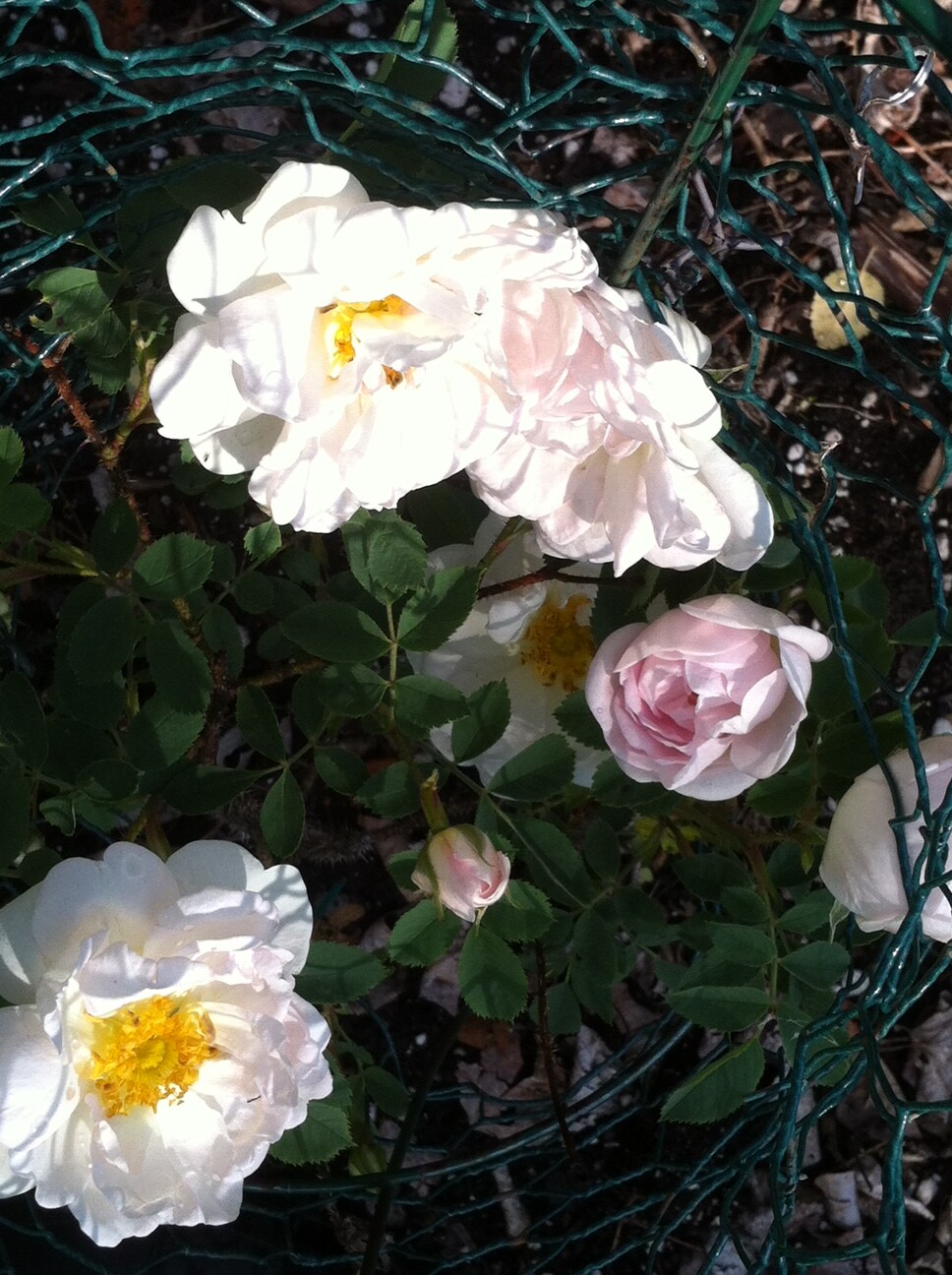The Caninae species and their hybrids demonstrate two important aspects of heredity:
- Genetic regulation of chromosome pairing
- Segregation distortion (all the unpaired chromosomes present in the ova, but none in the pollen)
In a diploid Rosa species with 14 chromosomes, we expect these to arrange themselves as seven pairs for meiosis. But what happens when we are dealing with a tetraploid that has been assembled from two diploids? [Basye’s probable amplhdiploid is probably an example; R. x kordesii is not.)
How do chromosomes from the two parental species avoid pairing off with the “wrong” partners? If they did, meiosis could become a jumble of pairs, trios, quartets and soloists. This is not good fertility.
In order to reduce chromosome pairing frequency enough to allow fertility, various genes come to the rescue. I have no idea how they accomplish the task, but they do. See Riley (1958), who located a few chromosomes that carried genes that determined whether haploids from hexaploid bread wheat would would behave as a triploid (x=7), or as a monoploid with 21 chromosomes.
http://bulbnrose.x10.mx/Heredity/RileyPairing.html
Temperature also plays a role. Wulff (1959) discussed the odd case of the triploid ‘Schneeschirm’. During its autumn bloom, this variety was sterile. However, during its summer flowering, “Their reduction division is characterized by the occurrence of only 0-3 trivalents, with pairing to 7 bivalents and 7 univalents or 1 trivalent, 6 bivalents and 6 univalents. This reduction division proceeds rather regularly. The univalents, splitting twice, are mostly taken up into the young tetrad nuclei. Chromosome elimination is low, and so viable pollen grains and egg cells will contain 14 chromosomes.”
That is to say, during the summer this variety acts like a tetraploid, so far as can be seen from its gametes.
And so, when a Caninae species is pollinated by a “regular” species (one that doesn’t do the Caninae mciosis), the mechanism regulating the special system is diluted. Blackhurst (1949) showed what happened in the F1 offspring from R. rubiginosa pollinated by various other species.
http://bulbnrose.x10.mx/Roses/Hurst/BLKHURST.HTM
Blackhurst’s results look like a hopeless mess, but never fear. Heslop-Harrison (1954) gave examples of Caninae x regular hybrids that were at least partially fertile.
Professor Heslop Harrison emphasized that the F1 lots, whilst conforming, in a general sort of way, cytologically to the usual Caninae pattern, in their later meiotic stages on the female side showed important anomalies. As a result, amongst the seedlings, orthoploid plants were secured carrying chromosome complements of 14, 28, 35 and 42. Thus it was clear that a new polyploid series had been evolved by a distinctly novel mechanism. Further, amongst the seedlings there were encountered aneuploid plants with chromosome numbers 2n=24, 2n=32 and so on.
Apparently, in development a fairly heavy mortality rate takes place, leaving F2 plants, as far as present results indicate, possessing, like > R. spinosissima> , a balanced set of 28 chromosomes. These plants display a regular heterotype division like > R. spinosissima > and a normal homotype division, and are quite fertile. Further, this same fertility is manifested in the F3 and F4 generations. Incidentally, the lecturer pointed out that pinkness in all these crosses is dominant.
http://bulbnrose.x10.mx/Roses/breeding/Durham.html
I must note that though some of these plants displayed a meiosis like that of R. spinosissima, they were not that species.
